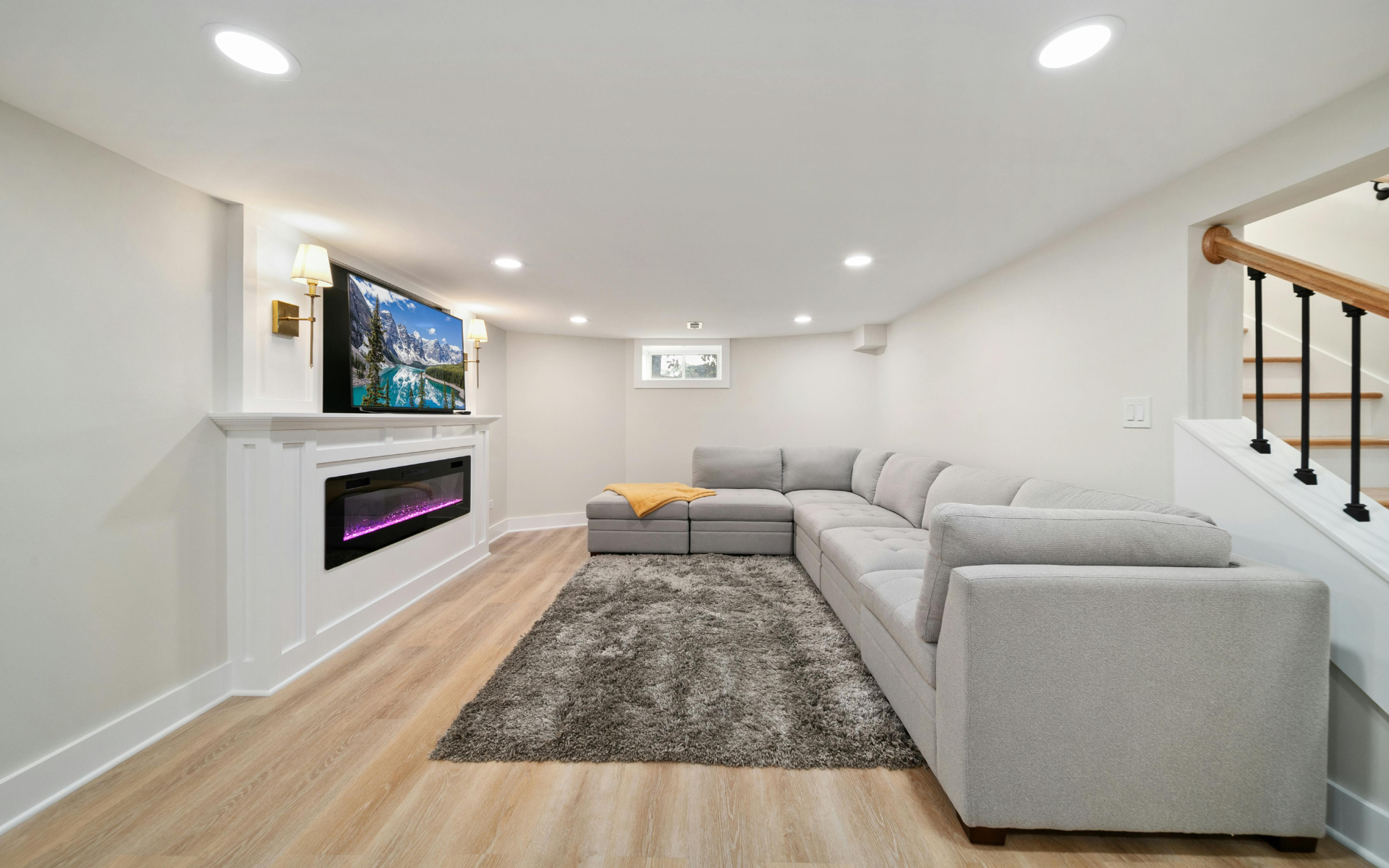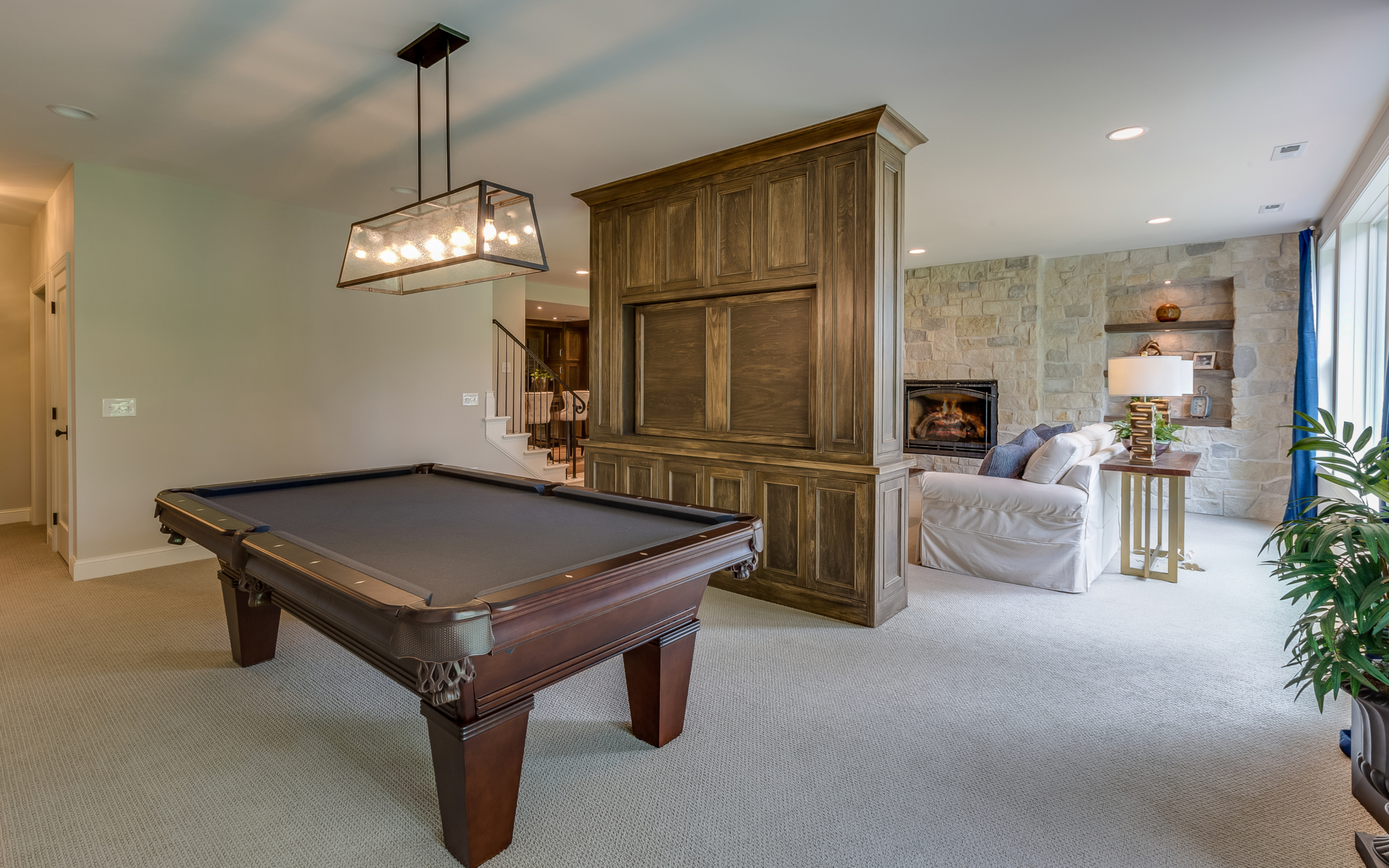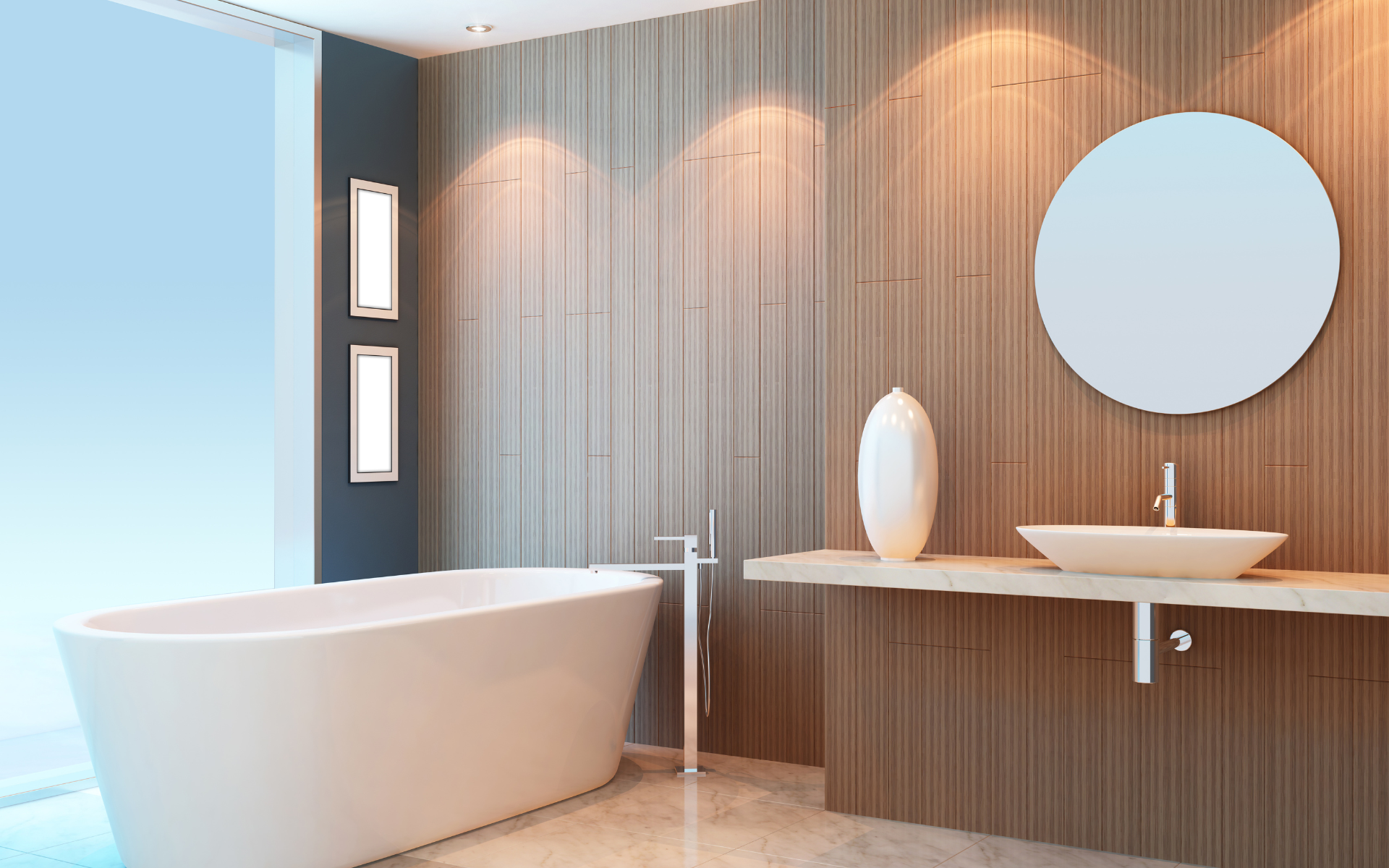Turning a dark, unused basement into a beautiful and functional space is one of the most rewarding home upgrades you can make. From adding a home office or a cozy family room to creating a guest suite or entertainment zone, there are endless possibilities. But before you start picking paint colors and flooring, the first and most important step is setting a solid basement remodeling budget.
In this post, we’ll walk you through what real basement remodeling costs look like, how to budget smartly, and what to expect when hiring professionals or doing portions yourself. We’ll lean on the latest Angi data to ground everything in reality. Let’s dive in.
Table of Contents
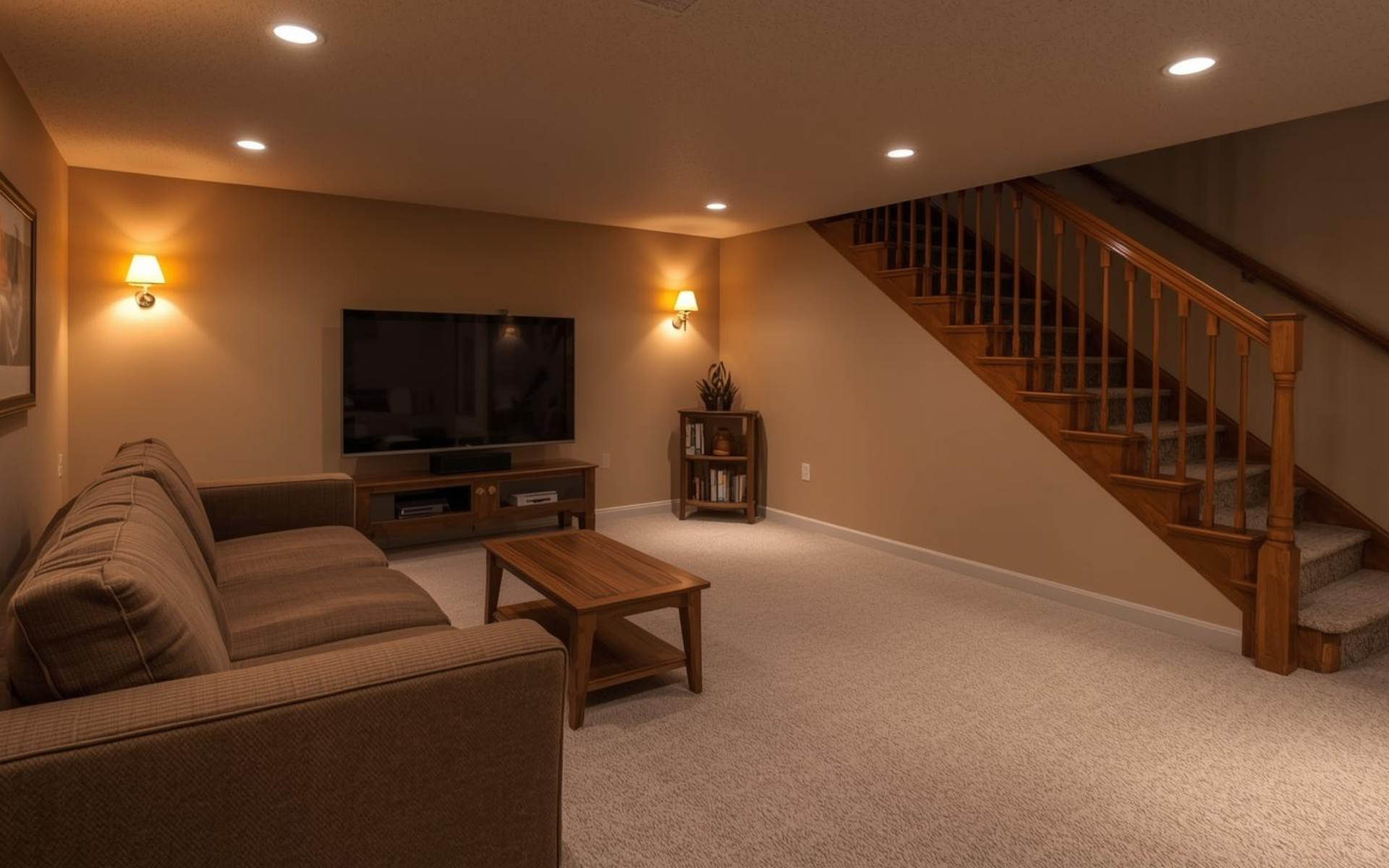
Why a Well-Planned Basement Remodeling Budget is Important
Every great remodeling project begins with a financial plan. Having a clear basement remodeling budget helps you stay on track, avoid unnecessary stress, and prevent overspending. It also allows you to prioritize what matters most, whether that’s adding a new bathroom, improving insulation, or investing in quality flooring.
A basement remodel isn’t just a cosmetic upgrade. It’s an investment in your home’s comfort, functionality, and value. A well-finished basement can increase your home’s resale appeal and offer additional living space for years to come. That’s why taking time to plan your basement budgeting strategy can make all the difference.
The Average Basement Remodel Cost
While every project is different, knowing the average basement remodel cost helps you gauge what’s realistic. According to 2025 data from Angi, most homeowners spend between $12,000 and $34,000 for a mid-range remodel. Larger or luxury projects can reach higher, depending on finishes and added features.
Rather than focusing on hitting a specific number, think of your basement budgeting as a guide. Some homeowners prefer to invest gradually, starting with functional upgrades before moving to décor and finishing touches. Others plan everything at once for a complete transformation. Both approaches can work well, as long as the budget remains organized.
Key Factors That Influence Basement Renovation Costs
When building your basement remodeling budget, consider the factors that can make costs fluctuate.
1. Basement Condition and Existing Infrastructure
The starting point of your basement plays a huge role in shaping the total cost. An unfinished basement often requires more extensive preparation, such as waterproofing, adding insulation, or installing a subfloor to make the space livable. These foundational improvements aren’t glamorous, but they’re essential for preventing future issues like moisture damage, drafts, or mold. If the space has structural concerns or outdated wiring, those will also need to be addressed before finishing work can begin.
If your basement already has some infrastructure in place, such as existing walls, electrical outlets, or basic flooring, you’ll have a head start. Updating these features rather than starting from scratch can make a noticeable difference in your basement remodeling budget. Still, it’s important to have a professional inspection done first to ensure previous installations meet today’s safety and energy standards. Investing in proper preparation can save thousands down the line.
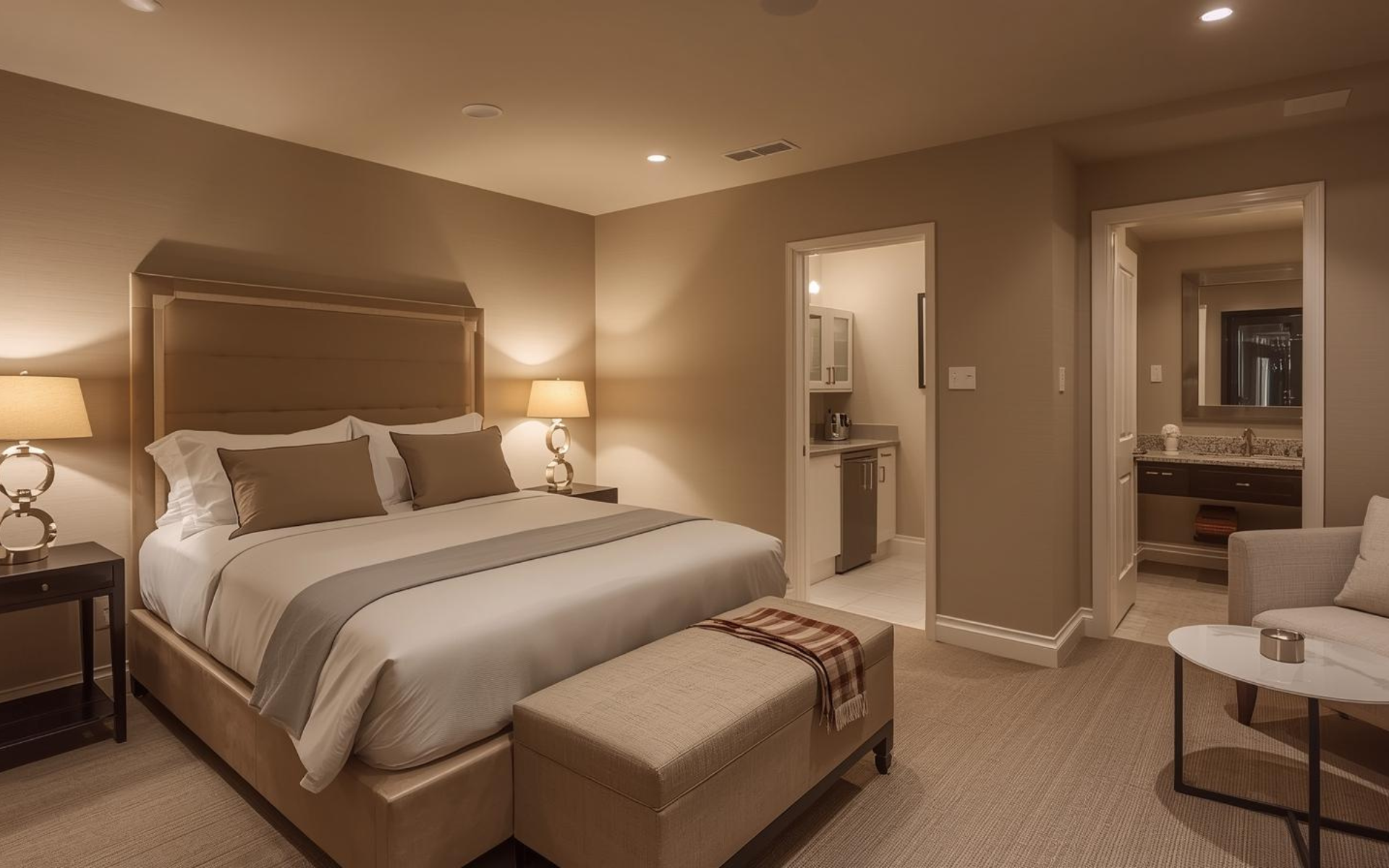
2. Layout Changes and Room Additions
Adding functional spaces like bedrooms, bathrooms, or a kitchenette will naturally increase your basement renovation costs. Each of these additions involves specialized work like plumbing for bathrooms, ventilation for kitchens, and additional lighting or outlets for living areas. These upgrades can transform a basement into a fully livable extension of your home, but they also require careful coordination between different contractors. The more complex your layout becomes, the more planning and budget flexibility you’ll need.
When considering new rooms, think about how you’ll actually use the space long-term. A guest suite or home office can increase property value, while a home theater or bar might enhance your lifestyle. Prioritize what fits your needs, then align those goals with your basement remodeling budget. Even a smaller addition can be done efficiently with the right design strategy.
3. Material and Finish Selection
The materials you choose can make or break your basement remodeling budget. Flooring, wall finishes, cabinetry, and lighting fixtures all vary widely in cost. For example, waterproof vinyl flooring is typically more affordable and practical for basements than hardwood, which can warp in humid conditions. Choosing durable yet stylish materials ensures your space looks great while staying within budget.
Finishes are another area where costs can climb quickly. Custom cabinets, designer tiles, or high-end paint may add a polished touch, but mid-range materials often achieve a similar look for less. It helps to set a clear hierarchy. Decide where you’re willing to splurge and where you can save. Mixing premium finishes in focal areas with more affordable options elsewhere is a great way to balance aesthetics and cost efficiency.
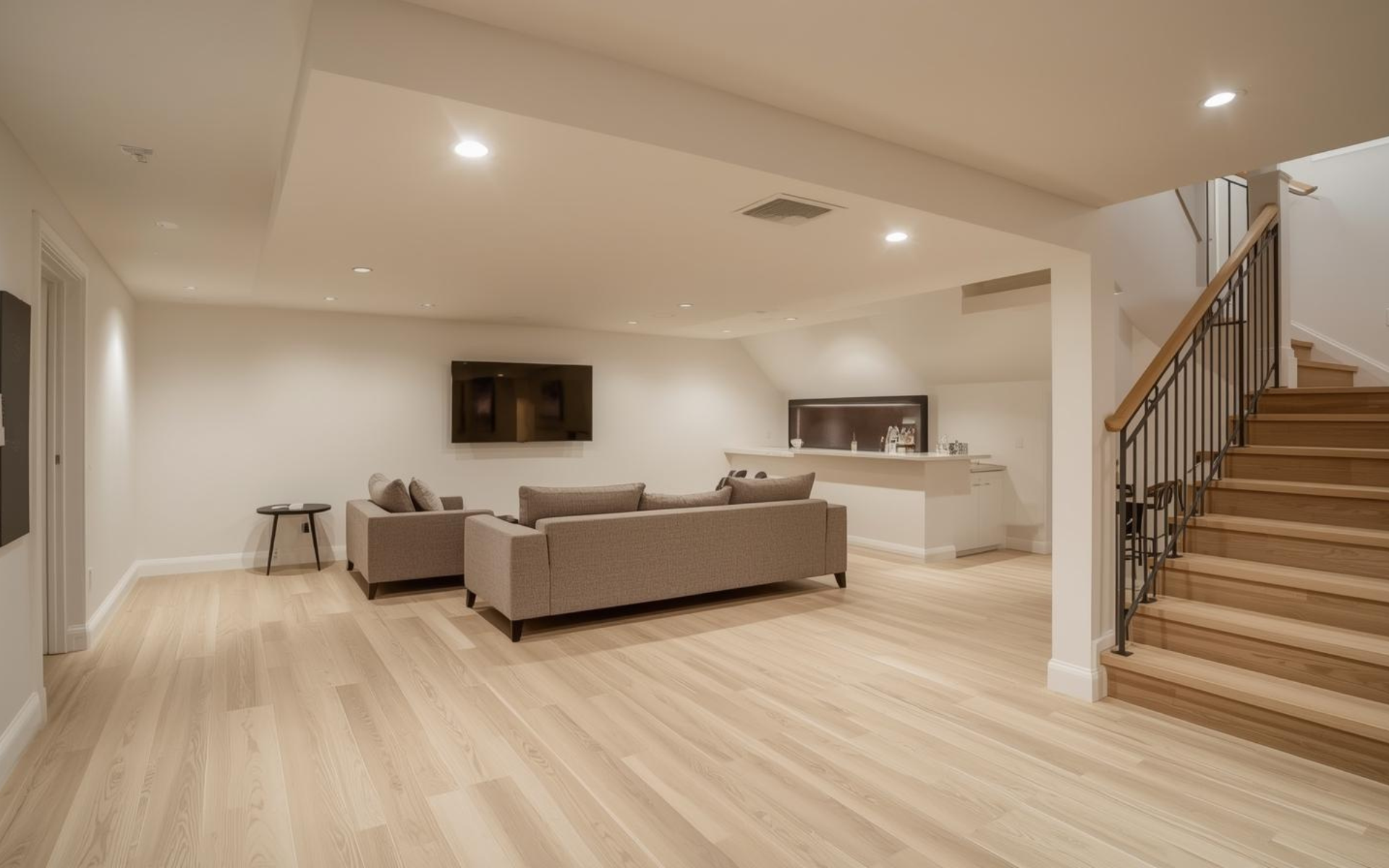
4. Labor, Permits, and Professional Services
Labor is one of the biggest components of any basement remodeling project. Hiring skilled professionals ensures that electrical work, plumbing, and structural modifications are done safely and up to code. Licensed contractors may charge more upfront, but their expertise helps prevent costly mistakes. Angi’s 2025 data also shows that general contractors typically charge between 10% and 25% of the total project cost, depending on scope and location.
In addition to labor, you’ll need to factor in building permits and inspection fees. These are mandatory for most renovations that involve electrical, plumbing, or structural work. While they can add several hundred to a few thousand dollars, they protect your investment and guarantee the project meets local standards. When budgeting for your remodel, always confirm permit requirements early to avoid surprises later in the process.
5. Moisture and Waterproofing Needs
Moisture control is one of the most important yet overlooked parts of basement remodeling. Even a small leak or damp spot can lead to mold growth and damage over time. Waterproofing methods such as sealants, sump pumps, and proper drainage systems are essential investments, especially in older homes. Ignoring these issues can result in costly repairs later and shorten the life of your finishes.
Including waterproofing in your basement remodeling budget not only protects your new investment but also adds to your home’s long-term durability. Consider professional waterproofing services if your basement has visible cracks, musty smells, or water stains. While it may seem like an added expense now, it ensures your remodel remains safe, dry, and worry-free for years to come.
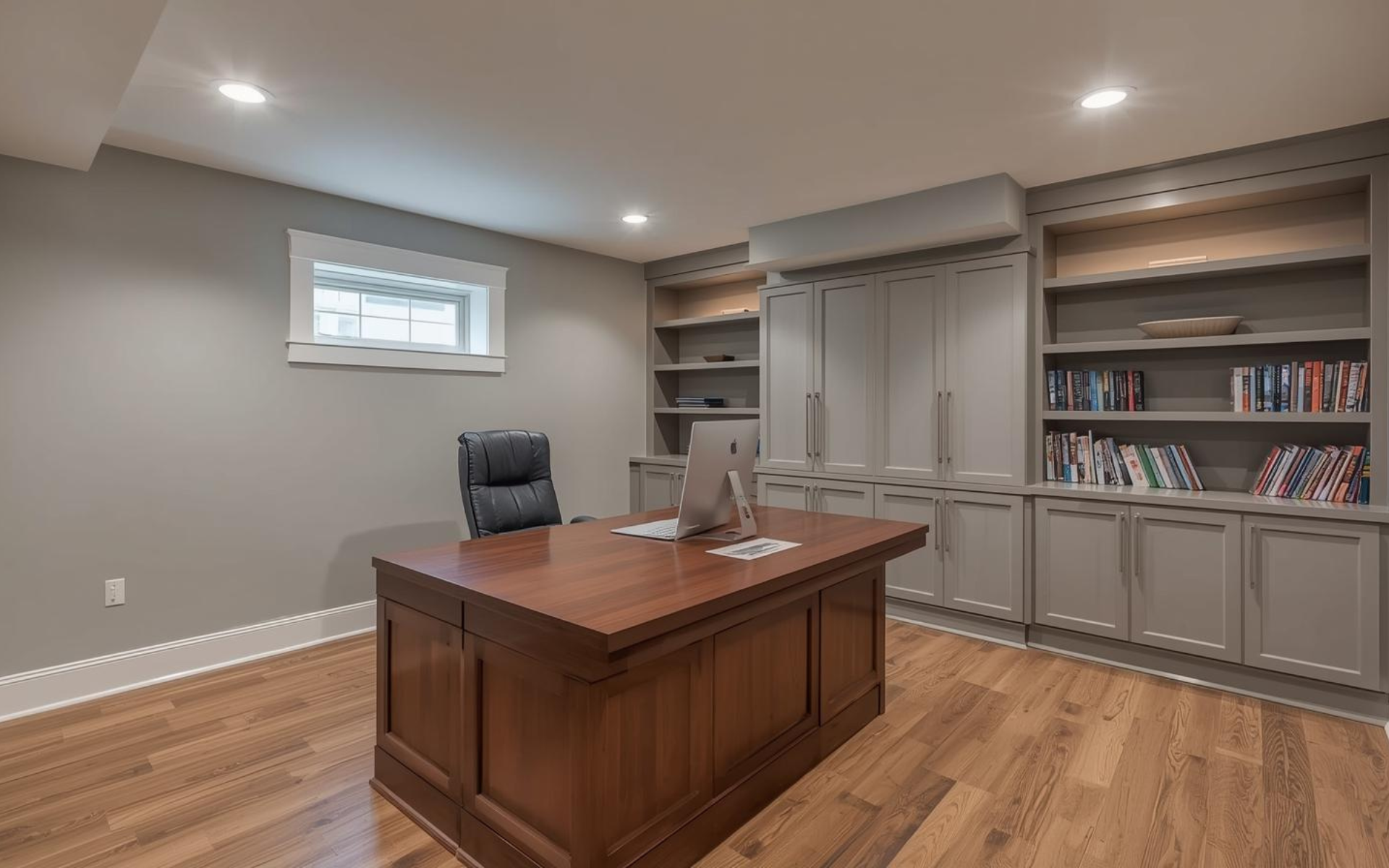
Setting the Foundation for Your Basement Reno Budget
Before you start crunching numbers, think about the purpose of your remodel. Are you planning a simple upgrade for an unfinished basement or a complete transformation into a full living area?
Your project’s scope will influence every cost decision moving forward. Here’s how to outline your priorities:
Define your goals. Decide how you’ll use the space. A playroom, guest suite, or home office will each have different requirements.
Assess the existing condition. Check for moisture issues, outdated wiring, or insulation problems that may need attention before aesthetic improvements.
Establish a spending range. Industry data from Angi in 2025 shows that remodels can range widely depending on square footage and complexity. Setting an initial target helps you plan around what’s realistic.
Leave room for flexibility. Every remodeling project has unexpected costs, so including a 10–15% contingency is a smart move.
Once you have these details outlined, you can start allocating funds more strategically.
How to Allocate Your Basement Remodeling Budget
Breaking down your basement remodeling budget into categories makes it easier to see where your money is going. Even if your remodel is small, there are key areas where your investment has the most impact.
Typical budget allocation might look like this:
Design and planning: 10%
Framing and construction: 25–35%
Electrical and plumbing: 15–20%
Flooring and finishes: 20–25%
Permits, inspections, and miscellaneous: 10%
Keep in mind that these numbers can shift depending on your design goals. For example, if you’re adding a bathroom or kitchenette, plumbing and waterproofing costs will take up a larger share.

Tips for Budgeting for a Basement Remodel in 2025
Creating an effective basement remodeling budget is all about preparation and smart decision-making. Here are some practical tips to help you stay in control of your spending:
Gather multiple quotes. Compare estimates from reputable contractors to find a balance between cost and quality.
Be transparent about your goals. Clear communication helps your contractor suggest cost-saving alternatives without compromising quality.
Plan for the unexpected. Water damage or hidden wiring issues can appear mid-project, so always keep a reserve fund.
Invest in energy efficiency. Proper insulation, LED lighting, and ventilation may cost more initially but can reduce utility bills over time.
Consider phased remodeling. If the full basement remodel feels overwhelming, focus on finishing one section at a time.
Your basement remodeling budget should reflect not just your immediate goals but also how you plan to use the space in the future. Think about flexibility. A home gym today could easily convert into a playroom or office down the line.
When you plan with adaptability in mind, your investment goes further. Choose materials that age well, designs that suit multiple uses, and finishes that are easy to refresh later.
Partnering with the Right Team
A well-planned basement remodeling budget is the foundation of a successful project. It keeps your expectations aligned, your spending organized, and your remodel on track. Budgeting is only one piece of the remodeling process. Working with experienced professionals ensures your project stays on schedule and within your financial plan.
Dupont Design Center brings years of expertise in design, installation, and remodeling across the DMV area. From initial planning to final walkthrough, our team helps homeowners create spaces that reflect their lifestyle and fit comfortably within their basement remodeling budget. Our approach combines transparent pricing, thoughtful design, and high-quality craftsmanship, so you can enjoy your remodeled basement with confidence.

